The North Carolina State Board of Elections (SBE) is proposing permanent rules on election observers and for election protests and recounts. Similar temporary rules were in effect for the 2024 election.
Election Observer Rules
The proposed rules on observers are based on General Statute 163‑45.1, which was passed as part of Senate Bill 747 in 2023. Three rules are under consideration.
1. Challenges to the Appointment of Observers: The most pertinent part of this rule is establishing a system for the chief judge of a voting location (early voting site or election day precinct) to challenge observers appointed by parties or candidates. The county board can remove challenged observers at a meeting held no later than two days after the challenge is issued. The rule does not state the vote needed to render a decision, so a simple majority is presumably sufficient.
That differs from the unanimous vote the SBE put into the rules for challenging voter ID affidavits. That rule further weakened North Carolina’s already squishy voter ID law. It is inconsistent to have different requirements for those two kinds of challenges.
2. Appeal of Removal of an Observer from a Voting Site established a procedure for observers who are kicked out of an early voting site or precinct to appeal that removal to the county board of elections. The county board must decide on the appeal within two days in the case of early voting sites and within two hours for election day precincts. There is no appeal beyond the county board
3. Identification of Observers: State law (General Statute 163-45.1.(d)) allows, but does not mandate, that the state board require observers to wear “an identification tag or badge to make voters and election officials aware of the observer’s role in the voting place.” Here is the full rule:
Every appointed observer serving at a voting site pursuant to G.S. 163-45.1 shall wear an identification tag to make voters and elections officials aware of the observer’s role in the voting site. The tag shall read “Observer for [Name] Party” or “Observer for Candidate [Name]” with the “[Name]” being the name of the political party or the candidate, as applicable.
(Candidate observers are for candidates not affiliated with any political party.)
Interestingly, the proposed rule does not provide guidance on the nature of the identification tag (size of tag, size of lettering, color, etc.). Party leaders may take advantage of that requirement by having observers wear large, bright tags so all voters at the site can tell which party they are with from across the room. This would be a form of silent electioneering inside the voting enclosure that is otherwise prohibited except by voters in line.
The SBE under Executive Director Karen Brinson Bell has had a fraught relationship with election observers, including two attempts to illegally suppress the number of observers. However, these proposed rule changes do not appear out of line.
Election Protest and Recount Rules
These rules are supposed to streamline the protest and recount process, allowing the SBE to certify elections earlier (except when a lawsuit is involved, as is currently happening in the 2024 state Supreme Court election).
Again, three rules are under consideration. All involve requiring county boards to react quickly to election protests or recount requests.
1. Timing of Election Protest Actions: This creates a short schedule in every step of the protest process: no more than two business days from protest filing to a preliminary decision about whether a full hearing is needed, 3-5 business days from the preliminary hearing to the full hearing (the old max was 10), and affected people notified of the county board’s decision by 5:00 the day after they made it.
2. First (Machine) Recount: Election officials must conduct a recount within three business days of a recount request, except that a mandatory recount (see General Statute 163‑182.7. for mandatory recount triggers) cannot start until the county canvass is completed 10 days after election day. It also clarifies that this recount must be conducted by machine “notwithstanding the method by which the ballots were originally counted.”
3. Second (Hand-Eye) Recount: Under General Statute 163‑182.7A., the candidate who lost the machine recount may demand a sample hand-eye recount. If that sample count indicates that the machine recount may have been incorrect, the SBE must order a hand-eye recount of all ballots in the jurisdiction.
Under the proposed new rule, county boards of elections must notify affected parties and candidates at least 24 hours before the start of the hand-eye recount, which must begin within two business days of the demand.
As the proposed rules change for observers, these proposed rules appear innocuous.
What You Can Do
The SBE has provided several ways you can give feedback on the proposed rules (copied from the SBE rules announcement):
- There are separate public comment portals for Election Observer Rules and Protest and Recount Rules
- Email: [email protected]
- Mail: Attn: Rulemaking Coordinator, PO Box 27255, Raleigh, NC 27611-7255
- Public Hearing: An in-person public hearing will be held at 10 a.m. March 6 at the State Board of Elections Office on the Third Floor of the Dobbs Building at 430 N. Salisbury St., Raleigh, NC 27603.
The deadline to provide your public comment is 11:59 p.m. on April 21.
If the state board approves the rules, they go to the Rules Review Commission (RRC) for a final review before becoming official. The RCC, which has its own public hearings on rule changes, has stopped SBE-proposed rules in the past.
